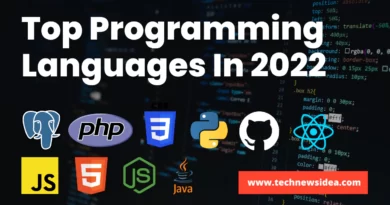Frontend Developer Roadmap 2023(Short)
The world of frontend development is constantly evolving, with new technologies and frameworks emerging frequently. To help you navigate this ever-changing landscape, here’s a roadmap that outlines the essential skills and concepts you should focus on as a frontend developer:
- HTML and CSS: Start by mastering the foundation of web development. Learn HTML to structure the content of web pages and CSS to style and layout those pages.
- JavaScript: JavaScript is the programming language of the web. Dive into JavaScript to make your web pages interactive, handle user events, and manipulate the content dynamically.
- Version Control: Familiarize yourself with version control systems like Git. Understanding how to manage and collaborate on code using version control is crucial for modern development workflows.
- Responsive Design: Learn how to create responsive layouts that adapt to different screen sizes and devices. This includes using media queries, flexible grids, and responsive images.
- CSS Preprocessors: Explore CSS preprocessors like Sass or Less. They offer additional features such as variables, mixins, and nested styles, making your CSS code more modular and maintainable.
- Frontend Frameworks: Dive into popular frontend frameworks such as React, Angular, or Vue.js. These frameworks provide efficient ways to build complex, dynamic web applications and manage state effectively.
- Package Managers and Build Tools: Familiarize yourself with package managers like npm or Yarn, and build tools like Webpack or Parcel. These tools automate tasks like dependency management, code bundling, and optimization.
- CSS Frameworks: Get acquainted with CSS frameworks like Bootstrap or Tailwind CSS. They offer pre-built components and styles that can speed up your development process.
- Web Accessibility: Understand the principles of web accessibility to ensure that your websites are usable by people with disabilities. Learn about semantic HTML, ARIA roles, and other accessibility best practices.
- Browser DevTools: Learn how to leverage browser development tools to debug and optimize your frontend code. Mastering DevTools will help you inspect elements, monitor network requests, and profile performance.
- Progressive Web Apps (PWAs): Explore the concept of PWAs, which provide a native app-like experience on the web. Learn how to use service workers, caching, and other techniques to make your web apps work offline and load faster.
- Testing and Debugging: Acquire knowledge of testing frameworks like Jest or Mocha, and understand different testing methodologies like unit testing, integration testing, and end-to-end testing. Additionally, learn how to debug your code effectively.
- Performance Optimization: Dive into performance optimization techniques to improve the speed and efficiency of your web pages. This includes optimizing assets, minification, lazy loading, and leveraging browser caching.
- Cross-Browser Compatibility: Understand the challenges posed by different browsers and their varying levels of support for web technologies. Learn to write code that works consistently across major browsers.
- Security Best Practices: Gain awareness of common security vulnerabilities in web applications and follow best practices to secure your frontend code. This includes mitigating risks like cross-site scripting (XSS) and cross-site request forgery (CSRF).
Keep in mind that this roadmap just serves as a broad guide; you can modify it to suit your needs and the specifics of your project. As you advance in your frontend development career, maintain your natural curiosity, stay current with fashion, and never stop learning. Coding is fun!




